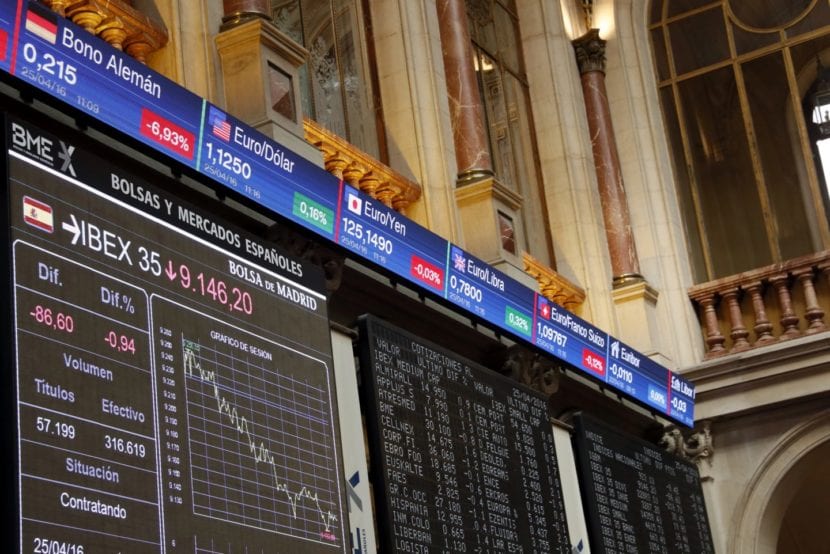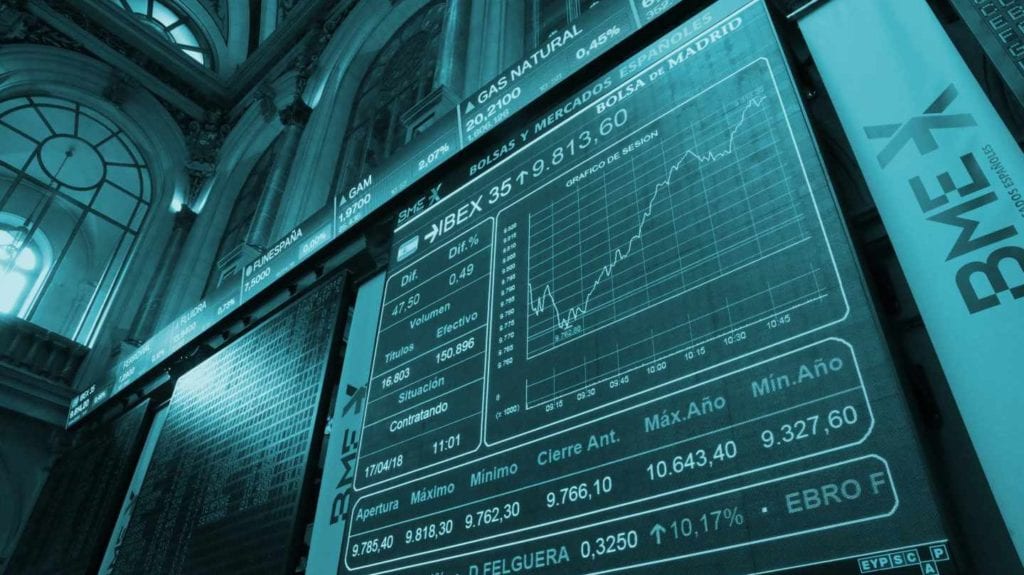
Within this economic sector, we can find a series of maneuvers and movements with which to control the risks that can be assumed on the capital invested in the stock market. This system is known financial leverage.
Doing business on the stock market is one of the financial activities that can have the most repercussions for young investors, both positive and negative, and usually what determines the difference in each of these aspects is the accumulated experience, as well as the level of risk that each of the participants in this economic activity is willing to undertake.
Consequently, there are cases of people who have created small fortunes by dedicating their lives to buy-sell movements on the stock market, but there are also many other cases, probably many more, of those people who in the blink of an eye, just as they would have invested their capital in a casino bet, end up seeing their savings or the resources accumulated from many years of hard work and effort.
Those are the two extremes that one can find in this type of business, but without a doubt, everything exists. types of cases and situations that they can count a certain number of successes and failures that turn investment in the stock market into an economic activity of multiple nuances about which nothing is assured.
What is financial leverage?
In simple terms, financial leverage consists of a type of investment that refers to the possibility of managing more money in the markets, than we actually have available at that time. In other words, it is about playing and risking a capital that we do not have liquidly. This is possible thanks to the fact that there are certain financial products that allow us to carry out this type of movement.

It is worth mentioning that the importance of financial leverage In current times it has transcended in such a way that it is not only available in the world of investments, but we can put it into practice, in a basic way, in our daily life, from our day-to-day life.
A first example with which we can approach what would be leverage in practice, is the management and management of credits, because that is precisely what these services are about, making a purchase through an amount of money that we do not have available at the time of purchase, and for this reason we will make the payment on a monthly basis.
For example, if you buy a car that is valued at about 20.000 euros, they can arrange a first payment of about 4.000 euros with the car agency and that means that you are leveraging yourself at a ratio of 5 to 1, that is, to obtain a Well, you're putting down a fifth of its value up front, even though you've scheduled it to pay off in a series of monthly payments.
This first scenario is to explain how financial leverage can be exercised even in our daily lives without realizing it. However, in the case of the stock market, this action acquires a greater implication and has, of course, more profound effects.
CFDs to be able to invest with leverage
About, if we want to buy a certain number of shares of a certain company and for a certain amount of money, the numbers are very important to define the possible losses or profits that we may have for said investment. For example, through the famous CFDs (contracts for difference), we have the possibility of buying shares for a value that exceeds our present financial capital, so that we can generate greater profits without having to pay an exorbitant amount of money at once.

In simple terms, leverage is a kind of risk multiplier effect, a financial instrument with a lot of potential to increase profits quickly, but which is at the same time one of the riskiest investment methods, especially for beginner investors who are just taking their first steps in this type of business, which is why which is not recommended at all for these people.
Therefore, if we plan to acquire about 100 shares of a company that has them at 20 euros each, but we do not have the capital available to make said purchase, which would be about 2000 euros, the leverage consists in giving the broker a percentage of said sum, which he requests as guarantee to be able to leverage you. In this way, you can invest, for example, 5% of the original amount of said purchase of shares, which would then be only about 100 euros in total, but under this modality, your benefits will be counted as for a number of shares equivalent to 2000 euros, and the interesting thing about this transaction is presented with the two main effects that can arise from it.
The first result that would be expected from the application of leverage is based on the possible profits that can be obtained by presenting positive effects, and consists of the following: if we obtain a profit of 10% with our CFD investment, our real profit would not consist of 10% of our initial investment, which is 100 euros, but in the 10% of the leverage that we did with the broker, that is, 10% of 2000 euros, which in total represents a profit of 200 euros, from which we obtain a net profit of 100 euros, with which in the end we double that first amount that we put as initial investment.
Naked eye, this modality can look quite attractive for anyone who is interested in types of financial movements, but as mentioned before, it is not recommended that inexperienced people acquire this type of risk, and we will see the reason with the following case that can be presented of a leveraged investment .
In the second scenario, the results are not at all satisfactory because here we are talking about losses and quite large ones. This negative effect consists in the fact that if the shares we bought fall apart and we have a loss 10%, then we will not have lost 10% of our initial $100, but the loss will be 10% of the $2000 that the broker brought in through leverage, even though we never gave it to the broker. In this situation, if the amount to cover the loss does not exist in our account, what happens is that the broker keeps what there is, leaves the account at zero and immediately removes us from the market.
How to reduce risks when applying leverage?
A very interesting way to reduce the possible losses to a minimum is to place with your broker what is known as a "stop loss", for which it is important to know the differentiation between the invested capital and the risked capital, a process that consists of the following:

- The invested capital is what we put on the table, that is, when we give our broker about 2000 euros to buy 100 shares at 20 euros each, of a certain company, we are investing those 2000 euros as such, he does not want more say that we have all that amount at stake, because thanks to the stop loss, we can do an automatic stop when the value of the shares begins to decline, and this is where the concept of venture capital comes in.
- Venture capital consists of making use of the stop loss to immediately sell our shares as soon as they start to fall to a certain amount. For example, of the 100 shares that were bought at 20 euros each, to reduce the risk of losses, we can apply a stop loss at 18 euros, which means that as soon as the value of each share falls from 20 to 18 euros, the 100 shares will be sold automatically, so we will shield ourselves against the possibility that their value continues to decline rapidly. In this case, we will only have lost 2 euros per share, and therefore we will be assuming a real risk of 200 euros, which will be our risk capital of the 2000 that are invested. In a few words, it is an effective way to get out of the game before things get too complicated, because in this business the value of a share can suddenly double, or fall precipitously until it loses almost all its value.

Just as we will have been able to observe, The use of leverage for investments in the stock market works as one of the most innovative and interesting risk instruments that exist today., since its intelligent use can bring profits well above those normally left by a normal purchase of shares. However, it must be borne in mind that it is a very risky financial instrument, which can imply very large losses and that its management must be left to the most experienced investors, since they are the ones with the knowledge and resources to face everything. type of unforeseen or economic losses.